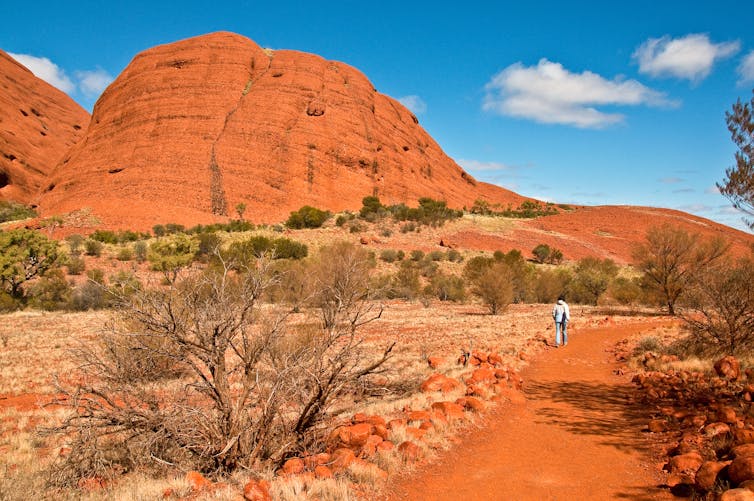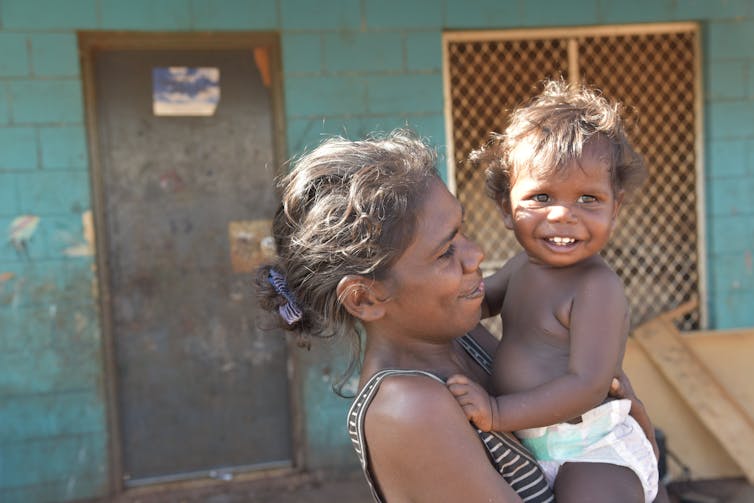When it’s hot outside, it’s safer to head for air-conditioned shelter – right?
Not always.
In northern Australia’s intensely hot climate, air conditioners were once luxury items. Houses were built to catch the breeze, and everything slowed down when the hot weather arrived. But over the last few decades, most people in hot cities like Darwin started spending much more time in air-conditioned comfort.
But our new research has found Territorians have become more likely to die from heat over the last 40 years, even as cooling has become more widely available. Why? If people spend all day in air conditioning set at 21℃, not only are they living more socially isolated and less active lives, but their bodies may not acclimatise to the heat – and that can make them more vulnerable when they do emerge into a steamy wet season afternoon.
An even more interesting finding is that the Northern Territory’s First Nations people are no more vulnerable to heat despite higher burdens of chronic disease, extreme poverty and very poor housing conditions for most. In many communities, air conditioning is expensive or unavailable.
How can that be? In part it is because First Nations people are protected by their culture, as co-author and Warumungu elder Norman Frank Jupurrurla knows firsthand. “When we look at the road crews working in 45℃ heat, we think – why are you killing yourself for your job?,” he says. “Why not stay in the shade, have a nap, and come out later?”
In countries such as Spain, the traditional siesta – a similar cultural method of coping with heat – has been all but extinguished because of the impact on the economy. But as the world grapples with ever-hotter temperatures, we may well need to relearn the art of the afternoon nap.
AAP
What’s the risk of living in constant cooling?
The Northern Territory is one of the hottest places on Earth, compounded by intense coastal humidity during the October-to-April wet season.
Heat can kill quickly, especially if you have pre-existing health conditions. Many heat-related deaths come from heart attacks, as the heart has to work harder in intense heat. Others come from dehydration, renal disease and frailty. The impact of intense heat builds, as well – if you don’t get a chance to cool down, you’re more at risk.
This is one reason people in hot countries often take a nap or siesta. As the world heats up, even siesta sceptics such as Germany are rethinking their opposition. Siestas aren’t about avoiding heat entirely – they’re about getting out of direct sun and resting.
Many First Nations communities swelter without power. Why isn’t there solar on every rooftop?
But what happens if you swap cultural practices of gentle heat exposure like the siesta for air-conditioned offices, cars and homes? You miss out on the physiological adaptations your body is capable of. It takes us around 15 days to acclimatise to a new heat regime.
The way we sweat, how our kidneys filter, even the way our hearts pump will change with acclimatisation. Our bodies are capable of adapting to hotter weather, to a point. That’s why Australia’s athletes went to Darwin before the Tokyo Olympic – to get ready for the to the humidity of the Japanese summer.

Shutterstock
How can you tolerate life without cooling?
Co-author Norman Frank Jupurrurla lives in Tennant Creek, between Katherine and Alice Springs. In the wet season, it’s stifling.
As he says:
During the day, it gets up to 45℃. You can’t do anything when it’s that hot. You’d never start walking or working outside. You want to do that, do it early in the morning or late in the afternoon or night. Otherwise you’ll just kill yourself.
In the heat, you have a nap – that’s the only thing you can do, in the shade. Roadworkers, fencers, workers – when we see them working, it’s like a machine that can’t stop even if its destroying itself. Is it their job? The money? If you have to do it, do it before the sun. Or wait for a cooler season.
Climate change is making it hotter still:
It’s getting warmer and warmer. We live here, we notice it. The weather is changing. My nanna, my grandfather, told us it was never this hot. We never felt the sun coming down like this.
Mr Jupurrurla grew up on the town’s outskirts, living in tin sheds. Only recently, at the age of 44, was he able to get decent housing. His upbringing would not have been possible now, as intensifying heat means informal housing is no longer safe. Even some formal housing isn’t safe.
Houses weren’t built for the climate. They just burn [with heat]. We have to make them safer.
On especially hot days, traditional methods of coping reach their limits. There’s nothing to do but to find a house with an air-conditioned room and stay in it. The problem is, it’s very expensive.
Norman Frank Jupurrurla’s experience is common. Houses in the Northern Territory have Australia’s lowest energy efficiency despite being exposed to climate extremes.

AAP
What should we take from this?
Reducing physical exertion during the hottest part of the day is a powerful mechanism to protect your health. On days that don’t involve extreme heat, siestas are free, carbon neutral and healthy. Policymakers need to engage with cultural adaptations like the siesta as tools to prepare for a hotter future, just as they are in Germany.
Just as important is making sure houses are built for their climate, as we are trying to do in Tennant Creek. Well insulated and well ventilated houses need much less air conditioning to remain comfortable and safe – perfect for a nap.
How climate change is turning remote Indigenous houses into dangerous hot boxes




